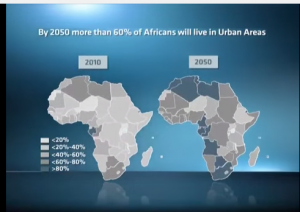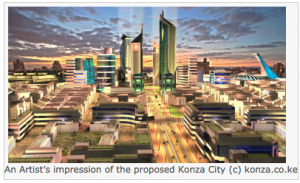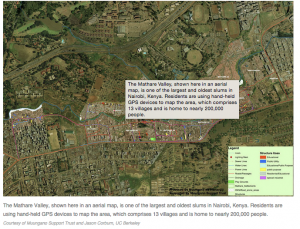Bright lights big cities
The worlds population is growing at an exponential rate. Cities generate 75% of a country’s wealth.Over 50% the world’s population live in urban areas – from small cities like York, to mega-cities like New York. However these problems are not restricted to developed cities but also developing. The bright lights and opportunities are attracting the population from all parts of a country to the major city.
Africa is transitioning towards a whole new socio-economic and political landscape as a result of urbanization. There is increased pressure on African cities as they are expanding rapidly. By 2050 7 out of 10 Africans will be living in cities. Urban sustainability becomes a major issue for urban planners as they seek to remedy the issues:
- Cities now consume about 75% energy and emit around 80% of all greenhouse gases – contributing to global warming
- Rapid urbanisation leads to rapid inequality: lack of affordable housing means the growth of slums with limited infrastructure
- Pressure for water, sanitation and waste management services.
- Urban disasters, increased spread of disease, informal employment and crime which test the resilience of the city.
- Coupled with other issues: geopolitical, climate change etc.
African city planners cannot rebuild cities from scratch to deal with these issues, so what is the future for these cities? Could Smart cities be the solution?
Africa has witnessed several surprising examples of a phenomenon called technological leapfrogging, essentially moving bypassing technological steps. For example, mobile-phone connectivity on the continent has skyrocketed – Africa is currently home to the second biggest mobile market in the world, over 300m people have access to a mobile phone and penetration rising from 1% in 2000 to 54% in 2012, surpassing the number of mobile users in the US, India or Europe.
Most people’s image of a smart city is of high-tech digital infrastructure and perfect public transport. So the question is: How can these technologies be adapted for African cities?
Nairobi is the capital and largest city in Kenya. It is home to over 3 million people. Like any other city in the world it suffers from mass urbanisation. And as a result there are various slums around the city- Kibera being the largest in Kenya and second largest in sub saharan Africa.
So on the one hand there is a tremendous opportunity for cities to expand into greenfield sites creating new areas for growth – a fresh start, perfectly planned. Konza city on the outskirts of Nairobi is part of Kenya’s vision 2030 to create a technological city dubbed “the silicon savannah” building on the tremendous amount of digital innovation currently coming of Kenya.
Konza city fits in the smart city mould – “promising potential residents a technologised, data driven future, away from the seemingly chaotic (and unconnected) streets of other parts of the city are emerging and mirroring those well-known global hubs.”
However this cannot solve the problem of slums in Nairobi. In developing countries such as Kenya where top-down utilities such as electricity, water and waste removal are unreliable or in some cases don’t exist there is an opportunity for localized solutions to emerge. This technological leapfrogging has created an opportunity for technological solutions to some of the problems they face. Empowering citizens to map their surroundings and impart their knowledge influences the government to make the changes in these environments.
So what is the solution? Focus on the new opportunities or enhance and innovate on what is already there? A city like Nairobi has tremendous challenges – and perhaps it is the mixture between the traditional smart city and the power of innovation and technology in the slums where we can find the solution to dealing with urbanisation.
Bibliography
- Future State of Africa’s Cities – https://www.youtube.com/watch?v=HCeqZHkN2eA
- The State of African Cities: Re – imagining Sustainable Urban Transitions: http://unhabitat.org/the-state-of-african-cities-2014/
- Smart Cities: adapting concepts for the Global South: http://www.theguardian.com/global-development-professionals-network/2013/nov/21/smart-cities-relevant-developing-world
- Konza city: http://www.konzacity.go.ke/
- In Kenya, using Tech to put an ‘Invisible slum’ on the map: http://www.npr.org/blogs/parallels/2013/07/17/202656235/in-kenya-using-tech-to-put-an-invisible-slum-on-the-map
- The rise of Afro-Smart Cities should be viewed with caution: http://blogs.lse.ac.uk/africaatlse/2014/07/16/the-rise-of-afro-smart-cities-should-be-viewed-with-caution/
- How Africa’s cities are using tomorrow’s technology: https://agenda.weforum.org/2014/05/tomorrows-technology-forum-africa-2014/
- Increasing Urbanization and Smart Cities: http://blog.iese.edu/africa/2014/12/10/increasing-urbanization-and-smart-cities/







.png)
].gif)
.png)
].png)
].png)
].png)
.png)
].png)
.png)
